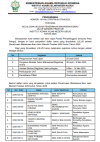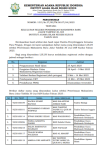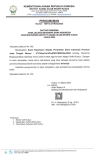MICROTEACHING IN MACRO-SCALES

MICROTEACHING IN MACRO-SCALES
by Taranindya Zulhi Amalia
Microteaching represents a small portion of teaching for teacher candidates when they are still being students of Tarbiyah/Educational Department. This department obligates the students to take it as a part of Work Behavior Course (Mata Kuliah Perilaku Berkarya (MPB)). The lecture is presented in the sixth semester or in the third year of study. They do it after get educational knowledge at the beginning and familiar with any educational terms.
In the real condition, students will put every theory of education into practice. The practical time is going to take place in microteaching. At the moment the students of educational department perform one by one the teaching-rehearsal in front of class while they are watched by a tutor (a supervisor) and peers. This action is also called peer-teaching. Currently, the tutor takes roles as an observer, commentator, and advisor. Besides, the peers (as roles as students) may give comments and suggestions as well. Known for sure, the time of microteaching does not take any longer as the time of real-teaching action. Even not much time of teaching practice, most of the students feel reluctance to do it, especially for the very first time.
The Perfect Starter Time for Microteaching
Afterwards, when should educational students or lecturers start to practice microteaching? Do they or we (as a part of educator) hang around till the middle of study (in the sixth semester or in the third year of study)? Both of the students and lecturers perhaps have unrealized the perfect time. Truly, they are able to start it anytime since they surely have their educational community and background.
When they live in educational surroundings and socialize with their peers, they used to apply four language competences (listening to educational news, having conversation about education topics, reading and memorizing educational terms, and writing terms of education or for educational development). Ultimately, they bond into education and add skills on it.
For the shake of progress of education, educators and its candidates have possibly started microteaching earlier from the time when they are freshmen or second semester students. Freshmen may imitate the way their teachers in elementary or high school teach. Of course, they have to introduce themselves with some simple educational terms, materials, teaching methods before preparing microteaching process.
Firstly, they can do the preparation of doing microteaching in group. They may practice team-teaching as well. Asking the students to explore in theirown way is better wisely given to the freshmen. It becomes one of alternatives not to make the students blowing the nerve of being a figure in front of classroom. Then arranging the steps to be the students’ model does not have to be thought twice.
Micro Steps Forwards or Backwards?
Being a teacher needs practices and processes. There is no instant way to reach a wish for being the students’ idol. Someone is impossible to have a profession such as being a teacher if he/she does not have a soul of teaching. Without getting chemistry between him/her and the students, he/she could not be a guru (digugu lan ditiru). Whatever the teacher sayings are listened gladly by his students. And whatever his/her actions will be replicated by them. They try to be like him/her.
In fact, there are two directions of strolling the teacher’s stepping stones, forwardly and backwardly. Both of them may take place into microteaching. First, the steps forwards are:
(1) Applying things in front (here the (teacher candidates) students live out available syllabus and lesson plan to be practical convenient teaching appliance), (2) Dealing with a curriculum (the (teacher candidates) students are used to concern in educational terms so that anytime they see or need to use them, they know how to position them precisely), (3)Going with microteaching/peer-teaching (the (teacher candidates) students do it based on the available syllabus and lesson plan or self-lesson plan).
Therefore, second the steps backwards are:
(1) Evaluating the microteaching/peer-teaching by observer and peer’s feedback (the observer may comment directly to the (teacher candidates) students while the peers better assess on the written form), (2) Recording the microteaching process after the (teacher candidates) students are evaluated (The capable setting and professional helps make the process easier), (3) Repeating microteaching before doing macro-actions (the (teacher candidates) students show the peer-teaching once again after watch their video recording and get input from their observer and peers, followed by real teaching when they get a teacher job at school).
Handling Microteaching in Big Portion
Whilst microteaching has been started at the beginning of study, the educational observers (lecturers) have much time arranging their planning in lecturing. Microteaching practices could be inserted into college educational curriculum. The educational lecturers should provide those teacher candidate compulsory subjects plus microteaching at least mini-microteaching. Since government has given full authority to every higher education in designing its curriculum (autonomy of curriculum). It is noticed in Acts of the Republic of Indonesia No. 20 Year 2003 on National Education System CHAPTER VI Section Four of Article 24 of the Higher Education. In the education and its development, high educations have academic freedom also autonomy of science (including accommodate a space for microteaching presence in their curriculum.
Then, by the existence of microteaching in the syllabus, lecturers have opportunity to put in some meeting at the end of the lecture for doing microteaching. Independently, they give it in small portion (started from some main lectures) every semester but continually. The educational department (teacher candidates) students customarily go along their teaching-learning process. Automatically, they have routine practice in order to create a progress.
Never Come to an End of Practicing
Practice makes perfect. Even no one can be perfect but he can do his best and maximize his tries. Students who do studying and practicing at the same time perhaps will not create perfection, however they will develop and get maturity. The occasion of study is to develop their knowledge theoretically as practice makes experiences practically. Teacher candidates who have both of teaching comprehension will face better concepts and ideas for their next-own classes.
One case for instance occurs Islamic educational students. For them, they have to teach materials for ever and ever. They do not only have to teach Islamic knowledge (Fiqh, Aqidah Akhlak, al-Qur’an Hadits, or Cultural History of Islam (SKI)) but also apply them by themselves. A teacher possibly learns them for himself. Yet it is not necessarily in getting his students to teach the same thing to others. One way that can be offered is by applying microteaching in macro portion.
Macro portion means they do not have to practice the microteaching briefly all at once. Otherwise they do not have to analyze a certain changing curriculum in certain periods. They get the portions step by step in every semester so that their educational department could identify the progress of their teaching skills. Moreover, they could know exactly their weakness and talent in teaching. Certainly, improvements are going to be reached from lecturers’ flashbacks, peers’ comments, even theirselves resolutions










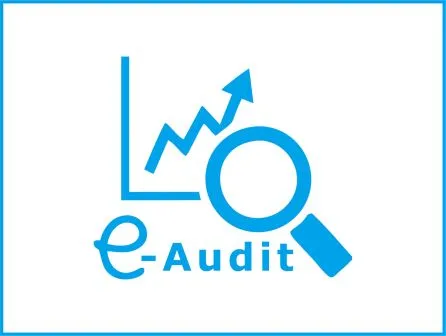



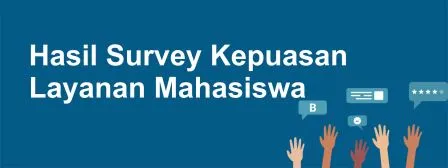

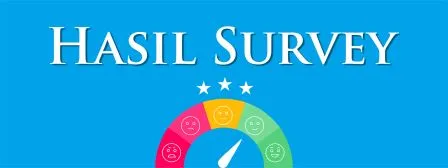
 Indonesia
Indonesia  English
English  Arabic
Arabic 


